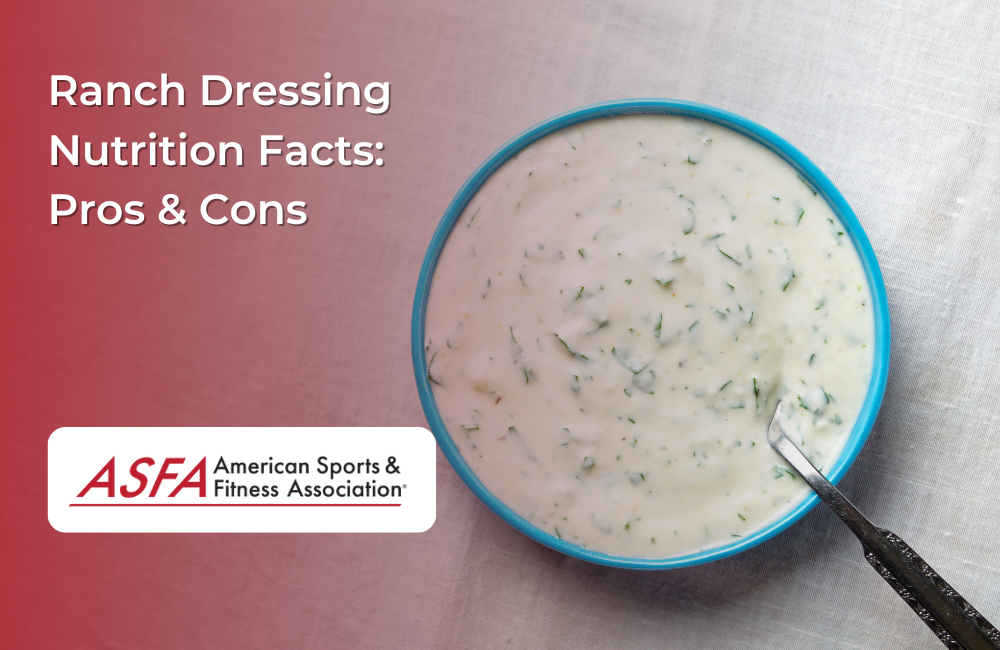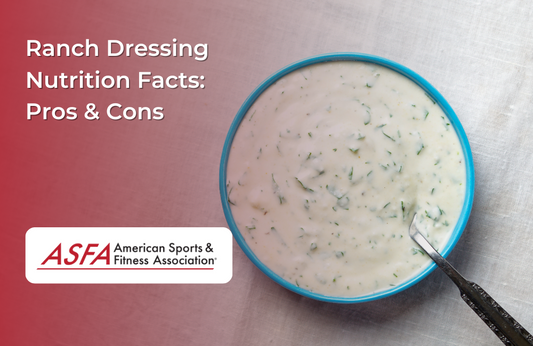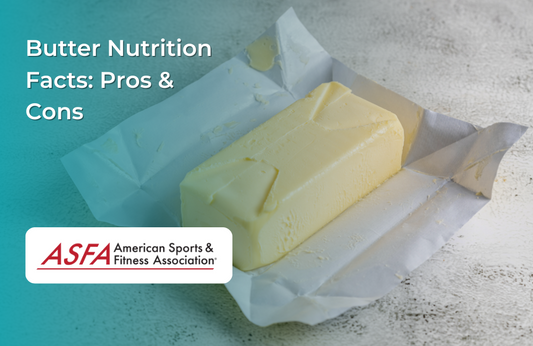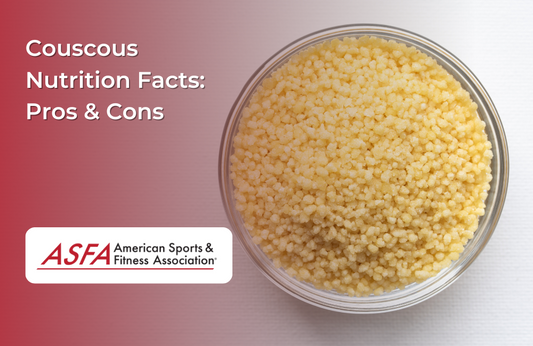Ranch dressing is a popular creamy condiment often used as a salad dressing, dip, or sauce. While it adds flavor to meals, it is also high in calories, fat, and sodium, which may impact overall health when consumed in large amounts.
Ranch Dressing Nutrition Facts: Pros and Cons of its Nutritional Profile
A two tablespoon serving of regular ranch dressing provides:
-
Calories: Around 130-150
-
Carbohydrates: 1-2 grams
-
Fiber: 0 grams
-
Sugar: 1 gram
-
Protein: 1 gram
-
Fat: 13-15 grams (including 2-3 grams of saturated fat)
-
Sodium: 260-300 mg
-
Vitamins and Minerals: Small amounts of calcium and vitamin K (varies by brand)
Pros of Eating Ranch Dressing
Adds Flavor and Enhances Meals
-
Improves the taste of salads, vegetables, and protein dishes. Ranch dressing can also make other veggies more appealing, helping individuals increase their vegetable intake.
-
Can encourage people to eat more vegetables by making them more appealing. Additionally, ranch dressing enhances the flavor of starchy foods like french fries and mashed potatoes, showcasing its versatility.
Contains Some Beneficial Fats and Fat Soluble Vitamins
-
Provides healthy fats from oils like soybean oil or canola oil (depending on the brand), which are rich in monounsaturated fat.
-
Helps with the absorption of fat-soluble vitamins (A, D, E, K) when eaten with vegetables.
Low in Carbohydrates
-
Suitable for low-carb and keto diets, as it contains minimal sugar.
Versatile and Easy to Use
-
Can be used as a dip, marinade, or spread, making it a convenient condiment.
Cons of Eating Ranch Dressing
High in Calories and Saturated Fat
-
130-150 calories per serving can add up quickly, leading to excess calorie intake. This can cause you to gain weight if you are not cautious with your caloric content.
-
Often contains unhealthy saturated and processed fats, which may impact heart health. While low-fat versions may have fewer calories, they can compromise the absorption of essential fat-soluble vitamins, presenting nutritional trade-offs.
High in Sodium
-
Some ranch dressings have over 300 mg of sodium per serving, which can contribute to high blood pressure if consumed in excess.
-
Managing sodium intake is crucial for maintaining cardiovascular health and preventing related issues.
-
Low-sodium versions are available, but they may contain additives.
May Contain Unhealthy Ingredients
-
Many store-bought ranch dressings contain preservatives, artificial flavors, and added sugars. Fat-free versions are available, but it's important to check nutrition labels as they may still contain additives that can affect overall health.
-
Some varieties use hydrogenated oils, which may contain trans fats. Low-calorie dressings can help reduce overall calorie intake, but be cautious of overly processed ingredients that may negate health benefits.
Can Be Overconsumed
-
Its creamy, rich texture makes it easy to use in excess, significantly increasing calorie and fat intake. Overconsumption can diminish the health benefits of the vegetables it accompanies.
Conclusion
Ranch dressing is a flavorful and versatile condiment that can make vegetables and meals more enjoyable. However, it is high in calories, fat, and sodium, making portion control important. Choosing healthier versions or making homemade ranch with Greek yogurt can provide a lighter alternative.
FAQs
Is ranch dressing bad for weight loss?
It can be if eaten in large amounts. Consuming ranch dressing in moderation can also contribute to bone health due to the presence of vitamin K, which is essential for maintaining strong bones. Using small portions or a lighter version can help control calorie intake.
What is the healthiest type of ranch dressing?
Look for low-fat, Greek yogurt-based, or homemade ranch dressings with fewer additives and lower sodium.
Does ranch dressing contain dairy?
Yes, traditional ranch contains buttermilk, mayonnaise, or sour cream, making it unsuitable for those with dairy allergies.
Can I eat ranch dressing on a keto diet?
Yes, most ranch dressings are low in carbs, making them suitable for keto and low-carb diets.
How can I make ranch dressing with fewer calories?
Use Greek yogurt or avocado as a base instead of mayonnaise or sour cream to reduce calories and fat.
Is ranch dressing high in sugar?
Most ranch dressings contain little to no sugar, but flavored versions may have added sugars.
How much ranch dressing is too much?
Limiting intake to 1-2 tablespoons per meal helps control calorie and fat consumption.
Maintaining portion control is crucial for overall health, as it ensures you are consuming nutrient-rich foods in appropriate amounts.
Does ranch dressing contain preservatives?
Many store-bought brands contain preservatives, artificial flavors, and emulsifiers, so checking ingredient labels is recommended.





